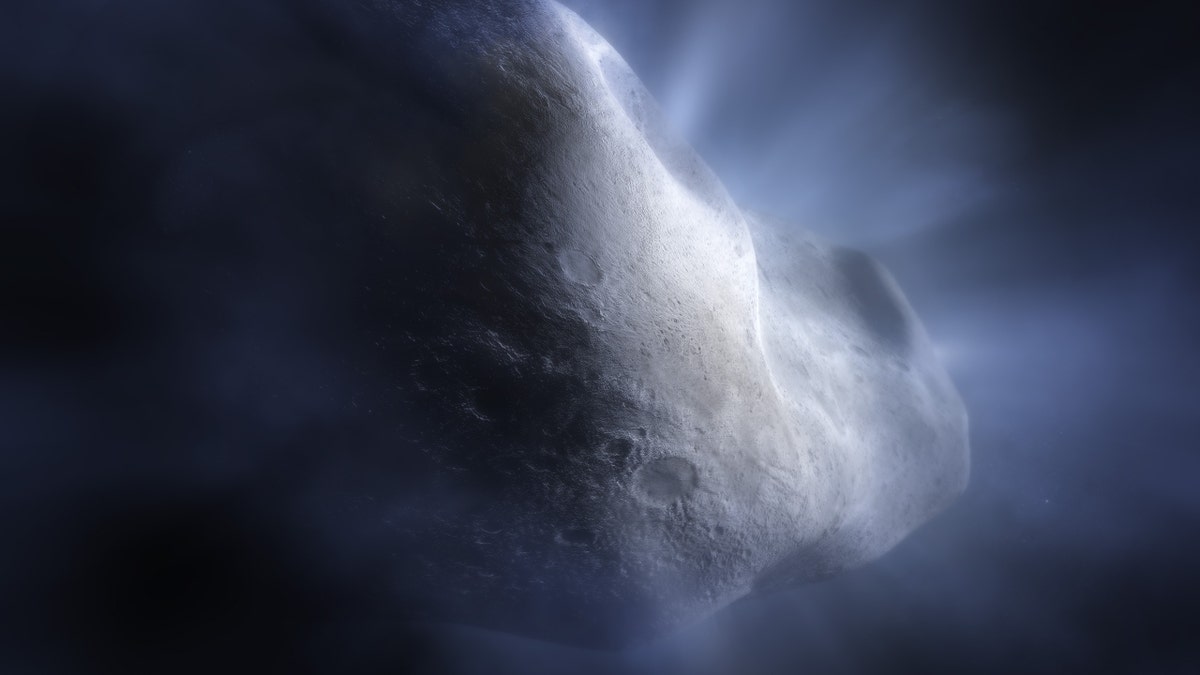Webb Space Telescope allows us to 'look into the past': Theoretical physicist
Theoretical physicist Dr. Michio Kaku explains the significance of new images provided by NASA's Webb Space Telescope on 'Sunday Night in America.'
NASA's James Webb Space Telescope has helped astronomers find gas around a comet in the main asteroid belt for the first time.
In a release, the agency said the water vapor was confirmed using the observatory's Near-Infrared Spectrograph instrument.
The findings indicate that water ice from the early solar system – which formed about 4.5 billion years ago – can be preserved in that region.
However, unlike in other comets, scientists said Comet 238P/Read had no detectable carbon dioxide.
NASA’S JUNO SPACECRAFT WILL FLY BY JUPITER'S VOLCANIC MOON IO

An artist’s concept of Comet 238P/Read shows the main belt comet sublimating – its water ice vaporizing as its orbit approaches the Sun. Sublimation is what distinguishes comets from asteroids, creating their distinctive tail and hazy halo. (NASA, ESA)
"Our water-soaked world, teeming with life and unique in the universe as far as we know, is something of a mystery – we’re not sure how all this water got here," Stefanie Milam, Webb deputy project scientist for planetary science and a co-author on the study reporting the finding published in the journal Nature, explained in a statement.
"Understanding the history of water distribution in the solar system will help us to understand other planetary systems, and if they could be on their way to hosting an Earth-like planet," she noted.
The comet is an object that resides in the main asteroid belt and periodically displays a halo and tail like a comet.
These main belt comets are a fairly new classification, and Comet Read was one of three comets used to establish the category.
Prior to that categorization, comets were known to reside beyond the orbit of Neptune, where ices could be preserved farther away from our sun.

This graphic presentation of spectral data highlights a key similarity and difference between observations of Comet 238P/Read by the Near-Infrared Spectrograph on NASA’s James Webb Space Telescope in 2022 and observations of Comet 103P/Hartley 2 by NASA’s Deep Impact mission in 2010. Both show a distinct peak in the region of the spectrum associated with water. (NASA, ESA, CSA, and J. Olmsted (STScI))
NASA'S PERSEVERANCE MARS ROVER CAPTURES IMAGES OF WHAT MAY HAVEN BEEN A WILD RIVER
The frozen material that vaporizes as comets approach the sun is what distinguishes them from asteroids, giving them their distinctive halo and tail.
Scientists had previously speculated that water ice could be preserved in the warmer asteroid belt – inside Jupiter's orbit – but NASA said the proof was elusive until now.

This image of Comet 238P/Read was captured by the Near-Infrared Camera on NASA’s James Webb Space Telescope on Sept. 8, 2022. The dusty coma and tail result from the vaporization of ices as the sun warms the main body of the comet. (NASA, ESA, CSA, M. Kelley/University of Maryland | Image processing: H. Hsieh/Planetary Science Institute), A. Pagan (STScI)
"With Webb’s observations of Comet Read, we can now demonstrate that water ice from the early solar system can be preserved in the asteroid belt," said astronomer Michael Kelley of the University of Maryland, lead author of the study.
CLICK HERE TO GET THE FOX NEWS APP
The absence of carbon dioxide, which typically makes up around 10% of volatile material in a comet, has two possible explanations presented by the researchers.
"Being in the asteroid belt for a long time could do it – carbon dioxide vaporizes more easily than water ice, and could percolate out over billions of years," Kelley hypothesized, also theorizing that Comet Read may have formed in a particularly warm part of the solar system, where no carbon dioxide was available.


